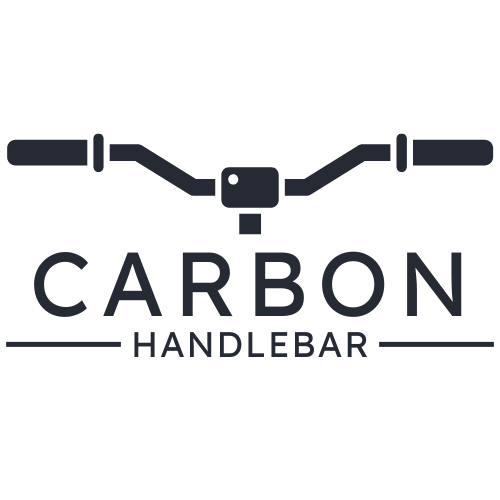The Importance of Handlebar Material
Handlebars are critical for controlling your bike, and their performance can vary considerably based on the material used, especially in wet conditions. Choosing between carbon and aluminum handlebars is essential depending on your riding style, terrain, and weather conditions.
Grip Performance in Wet Conditions
When considering grip in wet conditions, the material of the handlebar can influence both your comfort and safety.
Carbon Handlebars
- Grip Surface: Carbon handlebars often come with textured surfaces, which can enhance grip when wet.
- Versatility: Carbon has a degree of flexibility that allows it to absorb vibrations, which can provide a more stable grip.
- Weight: Lighter than aluminum, carbon can help maintain bike agility even in slick conditions.
- Temperature Sensitivity: Unlike metal, carbon doesn’t become slippery when it’s cold and wet.
Aluminum Handlebars
- Grip surface: Typically, aluminum handlebars have a smoother surface, which can become noticeably slick in wet conditions.
- Durability: aluminum is known for its toughness and can withstand more impacts than carbon.
- Cost-Effectiveness: Aluminum handlebars tend to be less expensive while still providing adequate performance in most situations.
- Temperature Sensitivity: Aluminum can become cold and slippery in winter conditions, impacting grip.
Comparison Table: Carbon vs. Aluminum Handlebars
| Feature | Carbon Handlebars | Aluminum Handlebars |
|---|---|---|
| Weight | Lightweight | Heavier |
| Grip in Wet Conditions | Superior, better texture | Can be slippery |
| Cost | Higher price point | More affordable |
| Durability | High, but prone to damage | Very durable |
| Vibration Dampening | excellent | Limited |
Handling and Performance in Wet Conditions
Performance is crucial when navigating wet terrains, and here’s how both materials stack up:
Carbon Handlebars Performance
Many riders opt for carbon handlebars due to their superior vibration-dampening properties. This quality helps in maintaining better control over the bike, especially when roads are wet and slippery.
Aluminum Handlebars Performance
While aluminum handlebars are robust,they may not offer the same level of comfort as carbon. Riders may experience more vibrations, leading to potential fatigue over long rides in wet conditions.
Benefits of Each Material in Wet Conditions
Carbon Handlebars
- Improved Comfort: Reduced vibrations lead to less hand fatigue.
- Better Traction: The textured surface aids in maintaining grip.
- Lightweight Design: Enhances agility and control.
Aluminum Handlebars
- Durability: Can handle rugged environments without damage.
- Cost-effective: More accessible price point makes it popular among recreational riders.
- Consistent Performance: Reliable under most conditions, though not specialized for wet weather.
Practical Tips for Optimal Grip
Regardless of the handlebar material, there are several tips to enhance grip performance in wet weather:
- Choose the Right Grips: Invest in grips designed for wet conditions, which frequently enough include rubberized surfaces for better traction.
- Clean Your Handlebars: Dirt and oil can reduce grip; keep handlebars clean and free from debris.
- Wear Proper Gloves: Consider moisture-wicking gloves for better handling when conditions get slippery.
- Avoid Overgripping: Maintain a relaxed grip; this can enhance your control and lessen fatigue.
Case Studies: Real-world Experiences
The following anecdotes from experienced cyclists showcase the effectiveness of carbon versus aluminum handlebars in wet conditions:
cyclist #1: Joe, Mountain Biker
Joe swears by his carbon handlebars for wet trail riding. He has noticed a important difference in grip and control,particularly during rainy descents. His choice has always led him to feel more secure and confident, even when tackling muddy trails.
Cyclist #2: Maria,Commuter biker
Maria prefers her aluminum handlebars for daily commuting.Although she doesn’t experience the same level of grip in heavy rain, she values the affordability and durability of the aluminum. After years of use, she has yet to see significant wear and tear on her setup.
Conclusion: Making Your Decision
When it comes to choosing between carbon and aluminum handlebars in wet conditions, both materials offer unique advantages. Ultimately, the choice will depend on your personal preferences, riding style, and specific needs. Whether you prioritize grip performance or cost-effectiveness, understanding the nuances will help make an informed decision for your biking experience.
